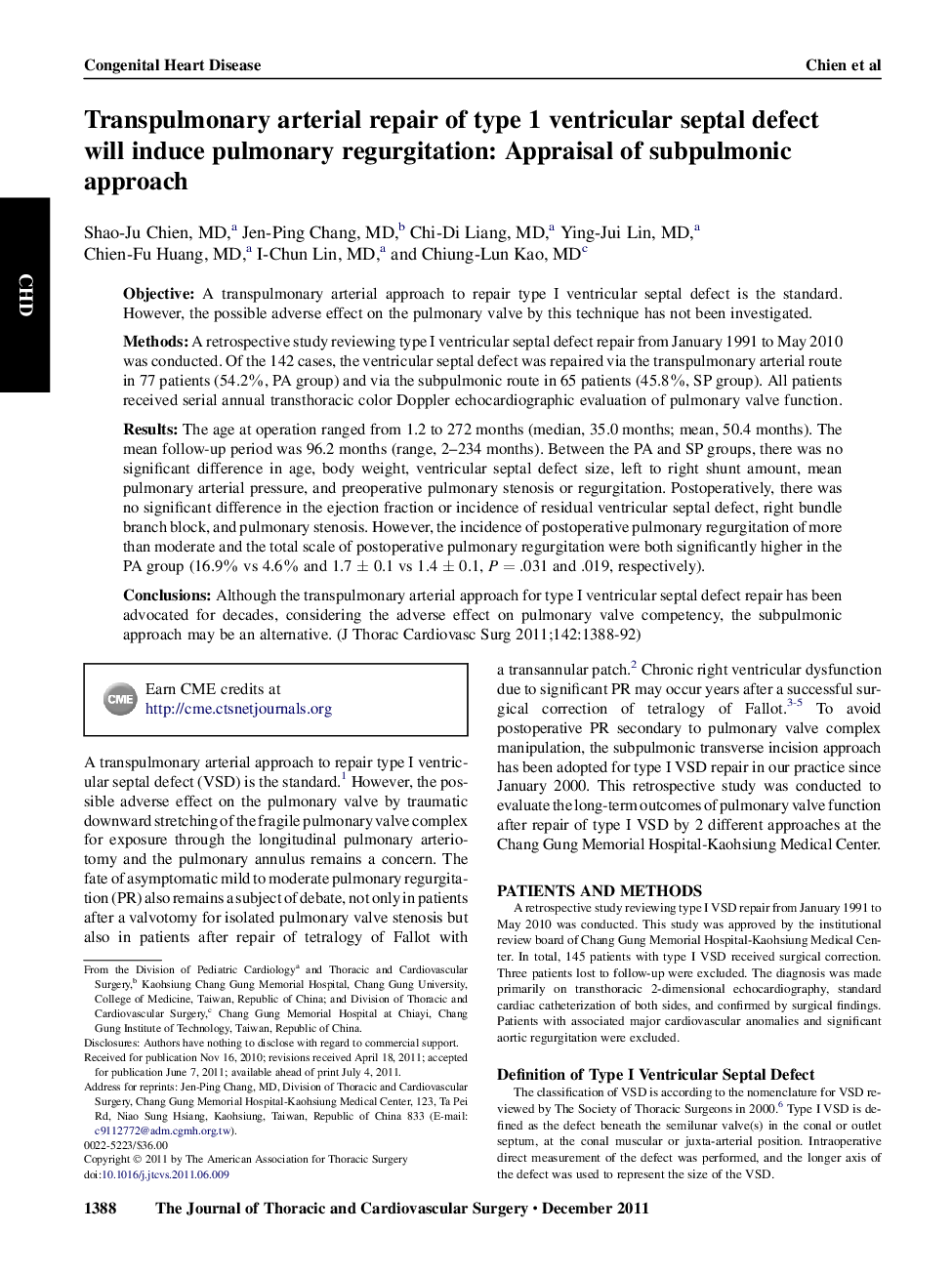| Article ID | Journal | Published Year | Pages | File Type |
|---|---|---|---|---|
| 5991944 | The Journal of Thoracic and Cardiovascular Surgery | 2011 | 5 Pages |
ObjectiveA transpulmonary arterial approach to repair type I ventricular septal defect is the standard. However, the possible adverse effect on the pulmonary valve by this technique has not been investigated.MethodsA retrospective study reviewing type I ventricular septal defect repair from January 1991 to May 2010 was conducted. Of the 142 cases, the ventricular septal defect was repaired via the transpulmonary arterial route in 77 patients (54.2%, PA group) and via the subpulmonic route in 65 patients (45.8%, SP group). All patients received serial annual transthoracic color Doppler echocardiographic evaluation of pulmonary valve function.ResultsThe age at operation ranged from 1.2 to 272 months (median, 35.0 months; mean, 50.4 months). The mean follow-up period was 96.2 months (range, 2-234 months). Between the PA and SP groups, there was no significant difference in age, body weight, ventricular septal defect size, left to right shunt amount, mean pulmonary arterial pressure, and preoperative pulmonary stenosis or regurgitation. Postoperatively, there was no significant difference in the ejection fraction or incidence of residual ventricular septal defect, right bundle branch block, and pulmonary stenosis. However, the incidence of postoperative pulmonary regurgitation of more than moderate and the total scale of postoperative pulmonary regurgitation were both significantly higher in the PA group (16.9% vs 4.6% and 1.7 ± 0.1 vs 1.4 ± 0.1, P = .031 and .019, respectively).ConclusionsAlthough the transpulmonary arterial approach for type I ventricular septal defect repair has been advocated for decades, considering the adverse effect on pulmonary valve competency, the subpulmonic approach may be an alternative.
